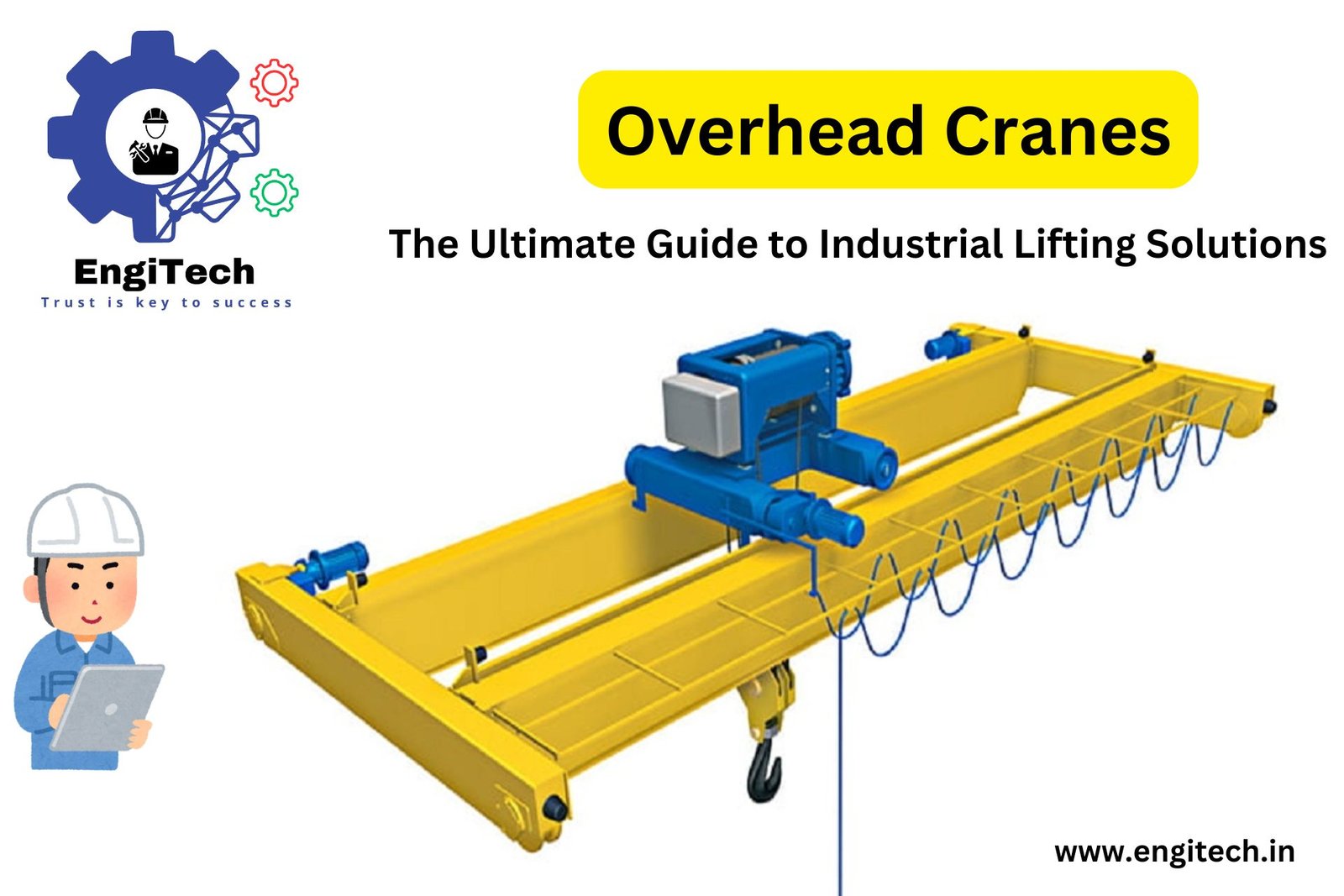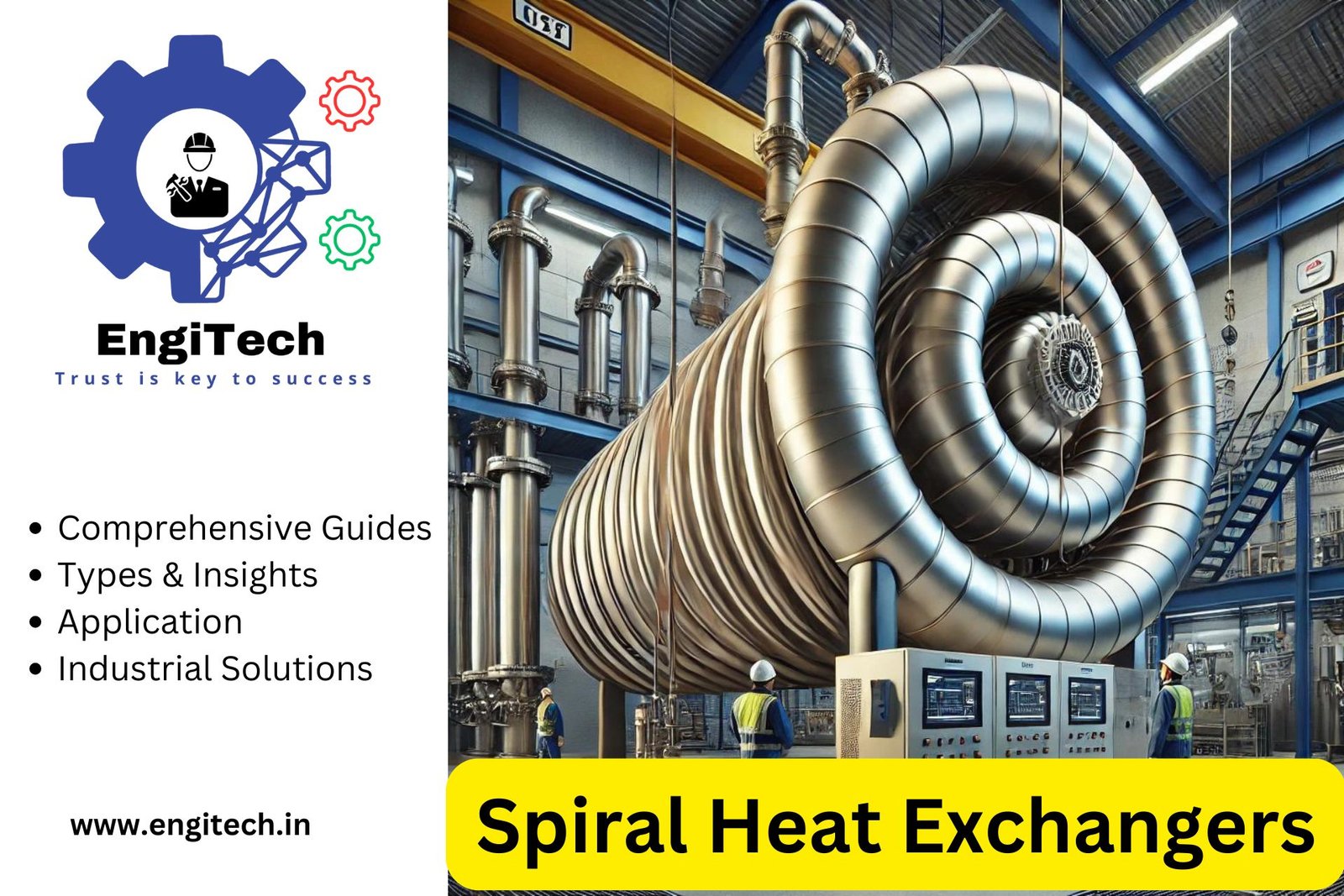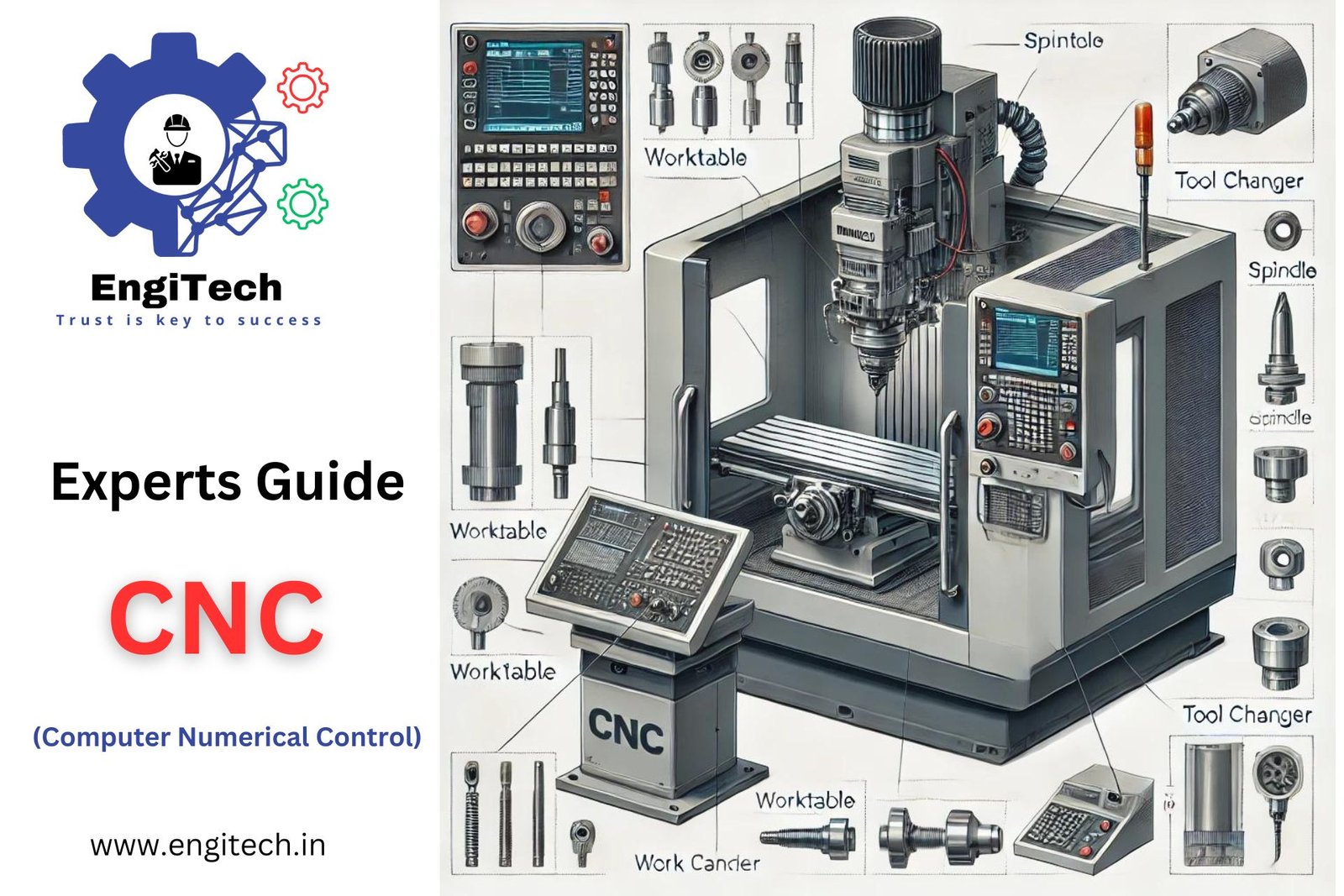Overhead Cranes: The Ultimate Guide to Industrial Lifting Solutions

Overhead cranes are a critical component in industrial settings, offering a powerful solution for lifting and transporting heavy loads with precision and safety. Whether you’re a knowledge seeker, student, or working professional, understanding the mechanics, applications, and best practices associated with overhead cranes is essential.
This guide provides an in-depth exploration of overhead cranes, designed to answer common queries, clear doubts, and offer expert insights into this vital piece of machinery.
Table of Contents
What Are Overhead Cranes?
Overhead cranes are machines used to lift and move heavy objects across a workspace. Unlike mobile cranes, which move around the worksite, overhead cranes remain fixed, allowing for efficient movement of materials within a designated area. Typically, they consist of parallel runways with a traveling bridge spanning the gap. The lifting component, known as a hoist, travels along the bridge.
Types of Overhead Cranes:
- Single Girder Cranes: These cranes have one girder beam supporting the trolley and hoist. They are ideal for lighter loads and offer a more cost-effective solution.
- Double Girder Cranes: With two girder beams, these cranes can handle heavier loads. The hoist is usually placed between the girders, maximizing lifting height.
- Gantry Cranes: Unlike traditional overhead cranes, gantry cranes have legs that support the bridge, allowing them to operate outdoors or in areas where overhead runways aren’t feasible.
- Jib Cranes: Jib cranes are smaller, rotating cranes that can be wall-mounted or floor-mounted. They are perfect for localized lifting tasks.
- Monorail Cranes: These cranes follow a single path or rail and are often used in production lines for repetitive tasks.
Key Components of Overhead Cranes
Understanding the components of overhead cranes is crucial for both operation and maintenance. Below are the main parts:
- Bridge: The bridge is the primary horizontal beam that spans across the runways. It supports the hoist and trolley, enabling movement across the workspace.
- Hoist: The hoist is the lifting mechanism that raises and lowers the load. It can be electric, manual, or pneumatic, depending on the application.
- Trolley: The trolley carries the hoist along the bridge, allowing for lateral movement of the load.
- Runways: These are the tracks on which the bridge travels. They are supported by the building structure or freestanding columns.
- Controls: Overhead cranes are controlled via pendant controls, radio controls, or cabin controls, depending on the system’s complexity and the operator’s requirements.
- End Trucks: These are the structures attached to the ends of the bridge, allowing the crane to move along the runways.
Applications of Overhead Cranes
Overhead cranes are used across various industries, each application highlighting their versatility and efficiency.
- Manufacturing: In manufacturing plants, overhead cranes move raw materials, parts, and finished products across different production stages. Their ability to handle heavy loads with precision makes them indispensable in automotive, aerospace, and heavy machinery industries.
- Construction: Construction sites use overhead cranes to transport materials like steel beams, concrete panels, and large equipment. Their stability and load-bearing capacity make them ideal for such heavy-duty tasks.
- Warehousing: Warehouses and distribution centers rely on overhead cranes to move large pallets, containers, and heavy goods. They help in optimizing space and improving the speed of operations.
- Shipbuilding: The shipbuilding industry employs overhead cranes to lift and place heavy ship components, such as engines and hull sections. Their ability to cover large spans is particularly beneficial in this sector.
- Steel Industry: Overhead cranes are essential in steel mills for handling raw materials, transporting molten metal, and managing finished steel products. The extreme conditions in steel mills require cranes that are durable and reliable.
How to Operate an Overhead Crane Safely
Operating an overhead crane requires adherence to safety protocols to prevent accidents and ensure efficient operation. Here are the key safety guidelines:
- Pre-Operation Inspection: Before using an overhead crane, conduct a thorough inspection of the crane’s components, including the hoist, trolley, bridge, and controls. Look for any signs of wear, damage, or malfunction.
- Load Capacity: Always be aware of the crane’s load capacity and never exceed it. Overloading can lead to equipment failure and accidents.
- Load Stability: Ensure that the load is properly secured and balanced before lifting. An uneven or unstable load can cause the crane to tip or the load to fall.
- Clear Pathways: Make sure the crane’s path is clear of obstacles, and ensure that no one is in the vicinity of the load during operation.
- Operator Training: Only trained and certified personnel should operate overhead cranes. Proper training ensures that operators understand the crane’s functions, limitations, and safety procedures.
- Emergency Procedures: Be familiar with the crane’s emergency stop controls and procedures in case of a malfunction or unexpected situation.
Maintenance and Inspection of Overhead Cranes
Regular maintenance and inspection of overhead cranes are crucial for prolonging their lifespan and ensuring safe operation. Here’s a detailed guide:
- Routine Inspections: Conduct daily inspections of critical components such as the hoist, wire ropes, controls, and safety devices. Look for signs of wear, corrosion, or damage.
- Periodic Inspections: These are more in-depth inspections that should be carried out monthly or quarterly, depending on usage. They include checking the condition of the bridge, runway rails, and electrical systems.
- Load Testing: Periodically perform load tests to ensure the crane can handle its rated capacity. This helps in identifying any potential weaknesses or issues with the lifting mechanism.
- Lubrication: Keep all moving parts, such as the hoist, trolley, and bridge wheels, well-lubricated to reduce wear and tear.
- Electrical System Maintenance: Regularly inspect the electrical components for signs of wear, loose connections, or overheating. Replace any damaged parts immediately.
- Record Keeping: Maintain detailed records of all inspections, maintenance activities, and repairs. This documentation is essential for tracking the crane’s condition and ensuring compliance with safety regulations.
Technological Advancements in Overhead Cranes
The field of overhead cranes has seen significant technological advancements, improving both safety and efficiency. Below are some of the latest innovations:
- Automated Cranes: Automation allows overhead cranes to perform repetitive tasks with minimal human intervention. These cranes use advanced sensors and software to move loads with precision, reducing the risk of human error.
- Smart Controls: Modern overhead cranes come with smart controls that provide real-time data on load weight, position, and crane performance. This data helps operators make informed decisions and enhances safety.
- Remote Monitoring: Remote monitoring systems enable operators to oversee crane operations from a distance, providing insights into usage patterns, maintenance needs, and potential issues.
- Energy Efficiency: Newer models of overhead cranes are designed to be more energy-efficient, using advanced motor controls and regenerative braking systems to reduce power consumption.
- Enhanced Safety Features: Modern cranes are equipped with safety features such as anti-collision systems, overload protection, and emergency stop functions, significantly reducing the risk of accidents.
Common Issues and Troubleshooting for Overhead Cranes
Even with regular maintenance, overhead cranes can experience issues that require troubleshooting. Here are some common problems and their solutions:
- Crane Won’t Start: If the crane fails to start, check the power supply, emergency stop button, and control fuses. Ensure that all safety interlocks are engaged.
- Hoist Malfunction: If the hoist isn’t lifting properly, inspect the wire ropes or chains for wear or damage. Also, check the hoist motor and brake system for issues.
- Unusual Noises: Unusual noises during operation often indicate a mechanical problem. Inspect the moving parts, such as the trolley wheels and bridge rails, for signs of wear or misalignment.
- Jerky Movements: If the crane exhibits jerky movements, it could be due to issues with the motor, control system, or lubrication. Ensure all components are properly lubricated and check the electrical connections.
- Overheating: Overheating is a sign of electrical or mechanical overload. Check the crane’s load capacity, ensure proper ventilation, and inspect the motor for any signs of wear.
Choosing the Right Overhead Crane for Your Needs
Selecting the right overhead crane for your application depends on several factors:
- Load Capacity: Determine the maximum weight the crane will need to lift and select a crane with a suitable load capacity. Always consider future needs to avoid outgrowing the crane’s capacity.
- Span and Lift Height: Measure the span of the area where the crane will be installed and the required lift height. These dimensions will influence the type of crane you choose.
- Operational Environment: Consider the environment in which the crane will operate. For instance, cranes in harsh environments like steel mills or chemical plants require special materials and coatings to withstand extreme conditions.
- Duty Cycle: The duty cycle refers to how frequently and intensively the crane will be used. Cranes with higher duty cycles are built to handle continuous operation, while lower duty cycle cranes are suitable for occasional use.
- Budget: While cost is a significant factor, it’s essential to consider the long-term value of the crane. Investing in a high-quality crane may offer better performance, safety, and longevity, reducing overall operational costs.
Expert Insights on Overhead Cranes
Our team of expert engineers offers the following insights on optimizing the use of overhead cranes:
- Customization: Customizing the crane to fit the specific needs of your operation can greatly enhance efficiency. Whether it’s a specialized hook, additional safety features, or automation, tailoring the crane to your workflow can yield significant benefits.
- Training: Continuous operator training is crucial for maintaining safety and efficiency. Regular training sessions ensure that operators are up-to-date with the latest safety protocols and operational techniques.
- Preventative Maintenance: Adopting a preventative maintenance approach can save time and money in the long run. Regularly scheduled maintenance checks help identify potential issues before they lead to costly repairs or downtime.
- Upgrading Technology: As technology advances, consider upgrading your crane’s control systems, safety features, and monitoring capabilities. These upgrades can enhance performance, safety, and energy efficiency.
- Collaboration with Manufacturers: Work closely with crane manufacturers to ensure that your crane is properly installed, maintained, and optimized for your specific needs. Manufacturers can provide valuable guidance and support throughout the crane’s lifecycle.
Commonly asked FAQs related to overhead cranes:
1. What is an overhead crane used for?
- Answer: Overhead cranes are used to lift and transport heavy loads across a designated area, typically in industrial settings such as manufacturing plants, warehouses, and construction sites. They enable the efficient and safe movement of materials and equipment.
2. What are the types of overhead cranes?
- Answer: The main types of overhead cranes include single girder cranes, double girder cranes, gantry cranes, jib cranes, and monorail cranes. Each type is suited for different load capacities, span lengths, and operational environments.
3. How do I choose the right overhead crane for my needs?
- Answer: When selecting an overhead crane, consider factors such as load capacity, span length, lift height, operational environment, duty cycle, and budget. It’s essential to match the crane’s specifications to the specific requirements of your operation.
4. What are the safety measures for operating overhead cranes?
- Answer: Safety measures include conducting pre-operation inspections, ensuring load capacity limits are not exceeded, securing and balancing loads, maintaining clear pathways, providing proper operator training, and understanding emergency procedures.
5. What is the difference between a single girder and a double girder crane?
- Answer: A single girder crane has one main girder beam supporting the hoist, making it suitable for lighter loads and more cost-effective. A double girder crane, with two girder beams, can handle heavier loads and offers greater lifting height.
6. How often should overhead cranes be inspected?
- Answer: Overhead cranes should undergo daily routine inspections before each use, with more thorough periodic inspections carried out monthly or quarterly, depending on usage. Load testing and maintenance should also be conducted regularly to ensure safety and functionality.
7. What is the typical lifespan of an overhead crane?
- Answer: The lifespan of an overhead crane can vary depending on factors such as usage, maintenance, and operational environment. With proper care, a well-maintained crane can last anywhere from 20 to 30 years or more.
8. Can overhead cranes be automated?
- Answer: Yes, many modern overhead cranes can be automated. Automation allows for precise, repetitive tasks to be performed with minimal human intervention, increasing efficiency and reducing the risk of human error.
9. What are the common issues with overhead cranes?
- Answer: Common issues include hoist malfunction, unusual noises, jerky movements, overheating, and control failures. Regular maintenance and inspections can help identify and resolve these issues before they lead to significant problems.
10. What are the advantages of using overhead cranes over other lifting methods?
- Answer: Overhead cranes offer several advantages, including the ability to handle heavy loads, maximize floor space, improve safety, increase efficiency, and reduce labor costs. They are also highly customizable to fit specific operational needs.
These FAQs are among the most frequently searched and asked by individuals looking to learn more about overhead cranes.
Conclusion
Overhead cranes are indispensable tools in various industrial applications, offering unmatched lifting capabilities and operational efficiency. By understanding the different types of overhead cranes, their components, applications, and maintenance requirements, you can ensure that your crane operates safely and effectively.
This guide has provided a comprehensive overview of overhead cranes, answering key questions and offering expert insights. Whether you’re a knowledge seeker, student, or working professional, the information here will help you make informed decisions and optimize the use of overhead cranes in your operations.
From EngiTech Team
EngiTech is your ultimate resource for in-depth knowledge on industrial mechanical engineering solutions. Our expert-driven content empowers professionals, students, and industry enthusiasts with valuable insights into cutting-edge machinery, including overhead cranes, industrial dryers, and more. Explore our comprehensive guides, stay ahead of industry trends, and optimize your operations with the latest innovations. Whether you’re looking to deepen your expertise or find the perfect solution for your business, EngiTech is your trusted partner in the engineering world. Discover the power of knowledge with us and elevate your industrial processes to new heights.


